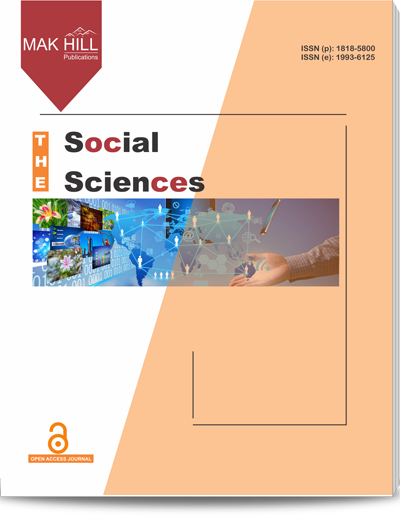
The Social Sciences
ISSN: Online 1993-6125ISSN: Print 1818-5800
95
Views
0
Downloads
Role of the Structure of Public Service Advertising Text in Influencing its Recipient
Larisa S. Tikhomirova, Natalya V. Danilevskaya, Elena Al. Bazhenova, Larisa G. Kyrkunova and Svetlana Ev. Ovsyannikova
Page: 1371-1374 | Received 21 Sep 2022, Published online: 21 Sep 2022
Full Text Reference XML File PDF File
Abstract
This study deals with a text of public service advertising which is a catalyst for moral behavior of society, a signal of social problems. Public service advertising differs from other ad types, primarily by its themes, objectives and functions. Public service advertising is created, by public organizations, non-commercial foundations and serves for forming public opinion. However, the problems covered by public service advertising may not always be welcomed by the society. Such advertising may ridicule the moral state of society, the poor performance of state institutions, various important issues unresolved by the legislature, etc. A well-planned structural organization of the text in accordance with the communicative purposes, genre and target audience will be effective and useful for society. This study has several communicative purposes identified (paying attention to the moral (ethical) and social value; calling for the solution of social problems; warning of the danger associated with the threat to life or health; finding a way out of social danger, violence, etc., promising a remuneration for performing any regulatory action, etc.) that define the structure of the text and its tone. As the studied material shows, texts of public service advertising have both folded and unfolded structure depending on the purpose and genre of the advertising message.
How to cite this article:
Larisa S. Tikhomirova, Natalya V. Danilevskaya, Elena Al. Bazhenova, Larisa G. Kyrkunova and Svetlana Ev. Ovsyannikova. Role of the Structure of Public Service Advertising Text in Influencing its Recipient.
DOI: https://doi.org/10.36478/sscience.2015.1371.1374
URL: https://www.makhillpublications.co/view-article/1818-5800/sscience.2015.1371.1374